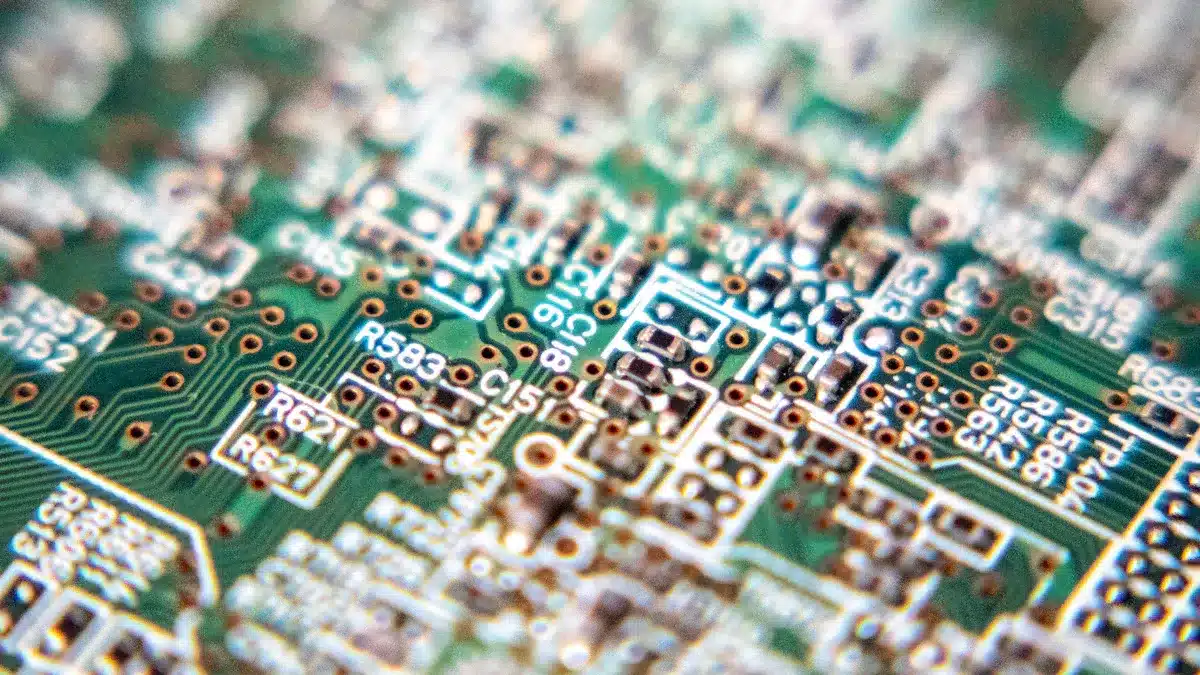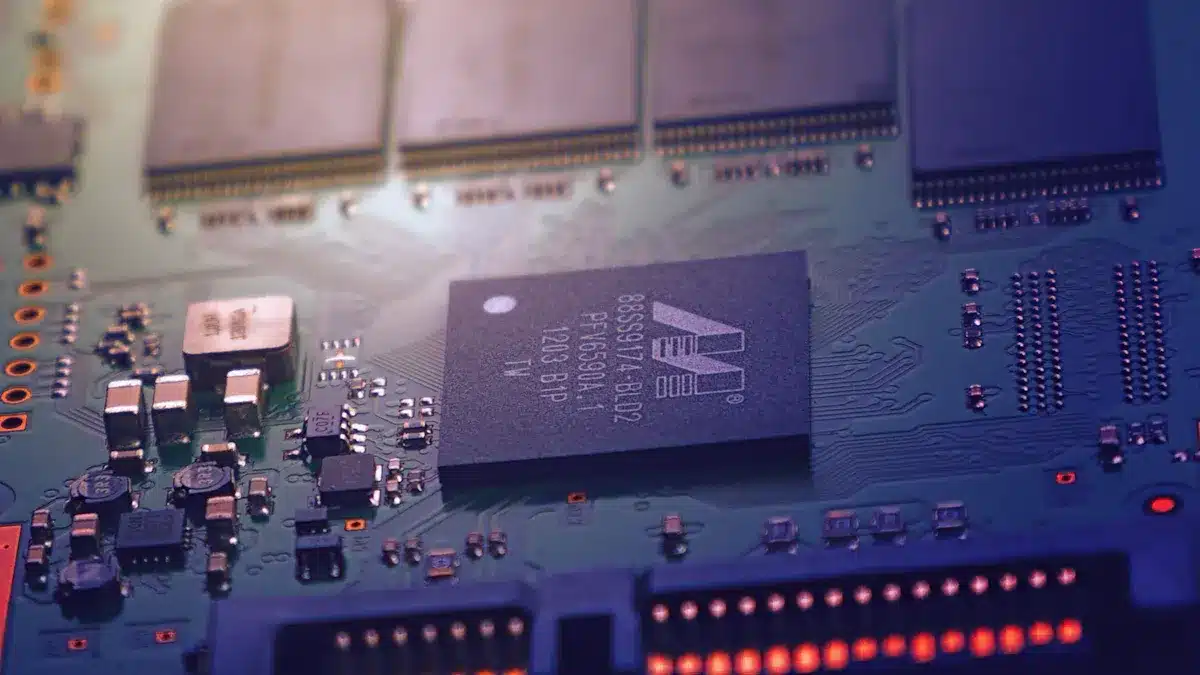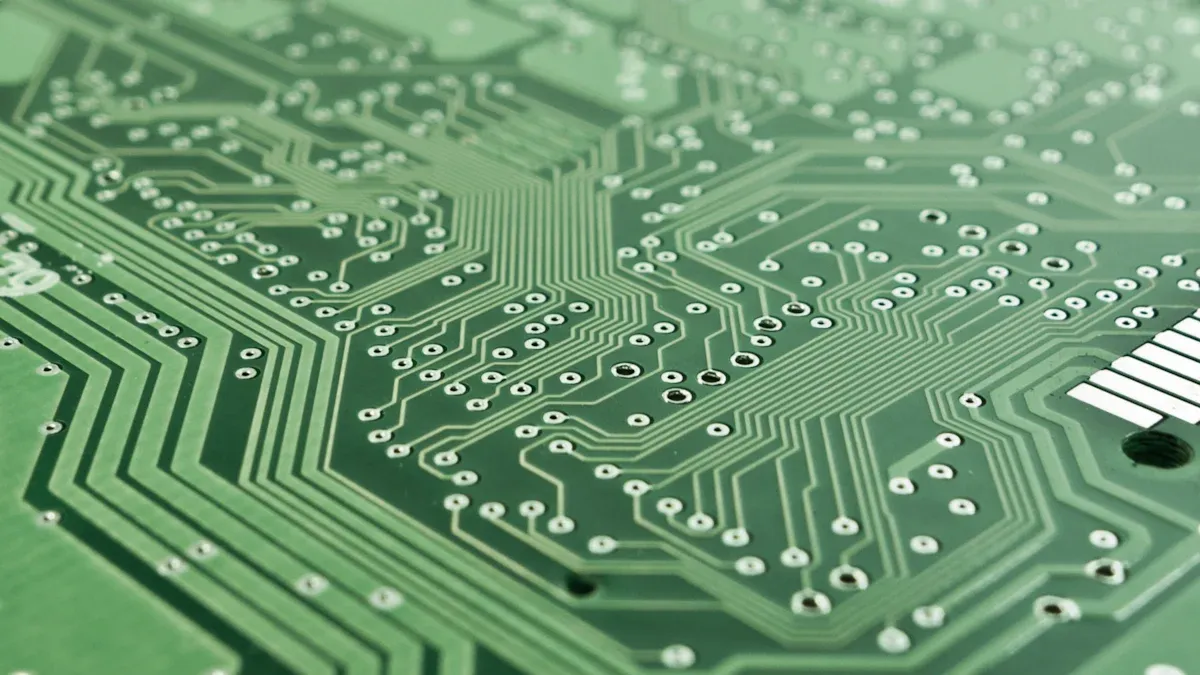
Flexible circuit boards are very important in today’s electronics. They can bend and fit into different shapes. This makes them necessary for many devices. You can find them in medical devices, aerospace technology, consumer electronics, and wearable technology. The global market for these printed boards is expected to reach USD 50.90 billion by 2030. This shows a fast growth rate. This growth happens because more people are using them. They are lightweight, durable, and can handle complex designs.
Key Takeaways
Flexible circuit boards are very important in today’s electronics. They help make devices smaller, lighter, and better at saving energy.
Single-sided and double-sided flexible circuit boards have special advantages. Single-sided boards save money and space. Double-sided boards can handle more complex designs.
Multi-layer flexible circuit boards allow for more wiring. They work well for advanced medical devices and small electronics.
Rigid-flex circuit boards mix stability with flexibility. They are great for use in aerospace, medical devices, and everyday electronics.
High-Density Interconnect (HDI) flexible circuit boards can support detailed designs. They are very important for smartphones and high-performance devices.
Single-Sided Flexible Circuit Boards

Characteristics
Single-sided flexible circuit boards, or single-sided flex PCBs, have one layer of flexible polyimide film. There is also a thin layer of copper. This design means you can only access the copper from one side. Here are some key features of these boards:
Flexibility: You can bend, fold, and twist them. This makes them great for small designs.
Material: They are mainly made from polyimide. This material is much more flexible than rigid materials like FR4.
Lightweight: Their thin shape makes them good for places where weight matters.
Space Efficiency: They fit well into tight spaces. This is important for devices like wearables and medical tools.
These features make single-sided flex PCBs a popular choice in many industries.
Applications
Single-sided flexible circuit boards are used in many areas because of their special qualities. Here are some common uses:
Wearable Electronics: You can often find them in smartwatches and fitness trackers. Flexibility and comfort are very important here.
Consumer Electronics: Devices like digital cameras and foldable smartphones use these boards for unique designs.
Medical Devices: They are often used in tools that need flexible circuits, like portable diagnostic devices.
Automotive Sensors: Their lightweight and simple design work well for car applications.
The benefits of single-sided flexible circuit boards include being cost-effective and easy to make. Their simple design needs fewer resources, which lowers production costs. This makes them especially attractive for things like radios, printers, and vending machines.
Double-Sided Flexible Circuit Boards
Characteristics
Double-sided flexible circuit boards, or double-sided flex PCBs, have two layers of flexible material. This design lets you have copper traces on both sides. They are connected by small holes called vias. Here are some important features of double-sided boards:
Increased Component Density: You can put parts on both sides. This means you can create more complex circuits.
Flexibility: They are a bit stiffer than single-sided boards. But they still bend well.
Material Composition: Like single-sided boards, they usually use polyimide. This material is great for heat resistance and flexibility.
The table below shows how double-sided flexible circuit boards are different from single-sided ones:
Feature | Single-Sided Flexible Circuit Boards | Double-Sided Flexible Circuit Boards |
|---|---|---|
Structure | One layer of flexible material on a rigid board | Two layers of flexible materials on both sides of a rigid board |
Component Placement | Only one side can hold components, limiting density | Components can go on both sides, which increases density |
Flexibility | Generally more flexible because of simpler design | A bit stiffer due to the extra layer of material |
Applications
Double-sided flexible circuit boards are used in many industries because of their special benefits. Here are some common uses:
Consumer Electronics: You can find them in smartphones, smartwatches, and earbuds. They fit complex circuits into small spaces, allowing for cool designs like foldable screens.
Medical Devices: They are important in wearable monitors and devices that go inside the body. The lightweight and safe materials make them comfortable and reliable for patients.
Automotive Systems: You can see them in dashboard displays and sensors. They resist shaking and temperature changes, making them good for tough conditions.
Aerospace and Defense: These boards are used in satellites and drones. Their light weight and high reliability help them work well in extreme conditions while keeping signals clear.
Double-sided flexible circuit boards have many performance benefits compared to single-sided boards. They improve signal quality, give more layout space, and support complex circuits. This makes them a popular choice for many uses.
Multi-Layer Flexible Circuit Boards

Characteristics
Multi-layer flexible circuit boards, or multi-layer PCBs, have many layers of flexible material. These boards usually have 4 to 8 layers, but some can have up to 12 layers or more. In special cases, flex PCBs can even have up to 20 layers. Here are some important features of multi-layer flex PCBs:
Characteristic | Description |
|---|---|
Thinness | Multi-layer flex PCBs are very thin. This helps them fit into small spaces. |
Flexibility | They are very flexible. This lets them fit into different shapes and areas. |
High Wiring Density | Their design allows for many wires. This helps create complex circuits. |
Lightweight Construction | These boards are light. This helps make devices lighter overall. |
Advanced Signal Routing | Multi-layer designs allow for better signal paths. This improves performance. |
Insulating Layers | Flexible layers between the wires help improve how well they work. |
Plated Through Holes (PTHs) | These holes connect the layers. This makes the circuit work better. |
Applications
You can find multi-layer flexible circuit boards in many advanced electronic devices. Their special features make them great for different uses. Here are some common applications:
Medical Wearables: These boards are key in health devices like blood glucose monitors and heart monitors.
Implantable Medical Devices: Multi-layer flex PCBs are important for devices like pacemakers and neurostimulators.
Hearing Aid Devices: They help fit parts into a small design, making them useful for hearing aids.
Diagnostic and Medical Imaging Equipment: You can see them in machines like ultrasound and MRI scanners.
Remote Patient Monitoring Devices: These boards are important for devices like wireless blood glucose monitors.
Endoscopic and Minimally Invasive Surgery Devices: They are crucial for tools like endoscopic cameras.
The benefits of using multi-layer flexible circuit boards include fewer assembly mistakes, lower costs, and better reliability. Their design helps with airflow and heat control, which makes devices last longer. This is why multi-layer flex PCBs are popular in high-performance electronics.
Rigid-Flex Circuit Boards
Characteristics
Rigid-flex circuit boards mix the best parts of rigid and flexible circuit boards. They have layers of flexible material and stiff sections. This lets you make complex designs. Here are some important features of rigid-flex boards:
Hybrid Structure: Rigid-flex boards have a special structure. They combine stiff and flexible materials. This design lets you fold and bend them to fit in tight spaces.
Stability and Flexibility: These boards are very stable but still have some flexibility. This balance makes them good for many uses.
High Circuit Routing Density: You can fit more circuits than on regular rigid or flexible boards. This feature allows for more complex designs in smaller areas.
Material Composition: Rigid-flex PCBs usually use polyimide for the flexible parts. Copper is used for the conductive layers. Adhesives like acrylic, epoxy, and polyimide-based options help stick the layers together.
The table below shows how rigid-flex boards are different from regular rigid and flexible boards:
Feature | Rigid Boards | Flexible Boards | Rigid-Flex Boards |
|---|---|---|---|
Structure | Rigid only | Flexible only | Hybrid of both |
Stability | High | Low | High |
Flexibility | Low | High | Moderate |
Circuit Routing Density | Moderate | Low | High |
Design Complexity | Low | Moderate | High |
Space Efficiency | Low | Moderate | High |
Applications
Rigid-flex circuit boards are used in many fields because of their special benefits. Here are some common uses:
Aerospace: Rigid-flex boards are key in radar equipment, GPS systems, and radio communication systems. Their strength and flexibility make them great for tough environments.
Medical Devices: You can find these boards in wearable health monitors and devices that go inside the body. Their light design and reliability are very important for patient safety.
Consumer Electronics: Rigid-flex PCBs are used in smartphones and tablets. They help create sleek designs while keeping high performance.
Automotive: These boards are important in advanced driver-assistance systems (ADAS) and dashboard displays. They resist vibrations and temperature changes, ensuring they work well.
The mix of rigid and flexible parts in these PCBs reduces the need for bulky connectors and cables. This design saves space and improves electrical performance. Rigid-flex boards are especially reliable in critical uses, like aerospace and military systems, where strength is very important.
High-Density Interconnect (HDI) Flexible Circuit Boards
High-Density Interconnect (HDI) flexible circuit boards are a big step forward in PCB technology. These boards can handle more complex designs in smaller areas. You can find them in many modern electronic devices, especially where space and performance matter a lot.
Characteristics
HDI flexible circuit boards have several important features that make them different from regular boards. Here’s a summary of their key characteristics:
Feature | Description |
|---|---|
Smaller Lines and Spaces | HDI supports 50-micron (2-mil) lines and spaces in production. Prototypes can reach 37.5 microns (1.75 mils). |
High-Density Laser Microvias | These allow for smaller hole sizes (50-micron) and make blind and buried vias possible for tighter packing. |
Advanced Materials | HDI uses high-quality materials that help create very dense and precise conductor shapes. |
Multi-layer Microvias | These include several layers of copper-filled, stacked microvias for complicated connections. |
Reduced Size and Weight | HDI uses very thin cores to cut down on component size and weight, making designs more efficient. |
These features make HDI flexible circuit boards perfect for small and high-performance uses.
Applications
You will find HDI flexible circuit boards in many places, especially in mobile devices. Here are some common uses:
Smartphones: HDI boards hold many parts in a slim design, making them key for modern smartphones.
Tablets: These devices use compact and flexible solutions that boost performance.
Laptops: HDI flex PCBs improve design flexibility and reliability in laptops.
Also, HDI technology helps make devices smaller, which is important for wearables and medical implants. The advanced connection methods lower signal loss and electromagnetic interference, making performance better. This is why HDI flexible circuit boards are a popular choice for high-frequency communication systems.
Flexible circuit boards are very important in today’s electronics. Their special designs help make small and efficient devices. You can see them in many areas, like medical wearables and consumer electronics. They use materials like polyimide, which keeps devices safe and comfortable, especially in health tools. As more people want smaller and more complex electronics, the market for flexible circuit boards is expected to reach USD 50.90 billion by 2030. This growth shows how important they are in fields like automotive, aerospace, and healthcare. Discover how flexible circuit boards can improve your projects and keep you updated with technology.
FAQ
What are flexible circuit boards?
Flexible circuit boards are thin and light circuits. They can bend and twist easily. They use materials like polyimide to fit into small spaces. You can find them in many devices, like smartphones and medical tools.
Why choose flexible circuit boards over rigid ones?
You should pick flexible circuit boards because they are adaptable and save space. They fit into tight spots and can handle movement. This makes them great for modern electronics that need compact designs.
How do I select the right type of flexible circuit board?
To choose the right flexible circuit board, think about what your device needs. Consider things like flexibility, how many parts it can hold, and the environment. Each type of flexible circuit board works for different uses.
Are flexible circuit boards more expensive than rigid ones?
Flexible circuit boards can cost more because they are harder to make. But their benefits, like being lighter and saving space, often make the cost worth it for high-performance uses.
Can I use flexible circuit boards in high-temperature environments?
Yes, you can use flexible circuit boards in high-temperature places. Many types are made with materials that can handle heat. This makes them good for use in cars and airplanes.
See Also
Exploring The Benefits And Drawbacks Of Flex PCBA
Key Functions Of Frequently Utilized PCBA Components
Streamlined PCBA Solutions For Quick Electronics Projects